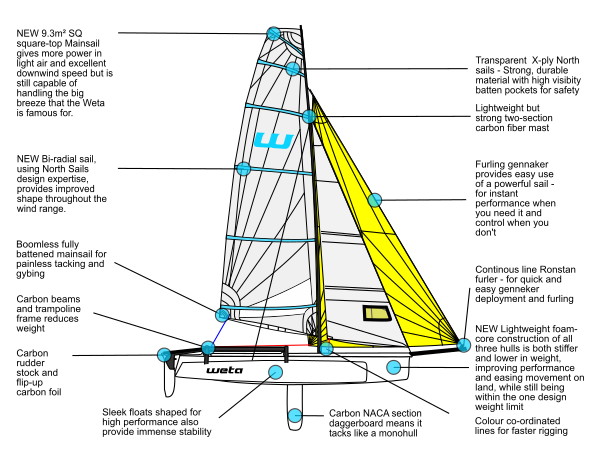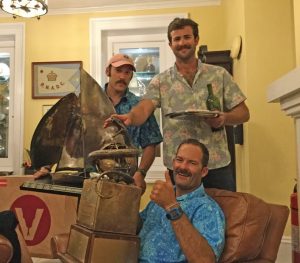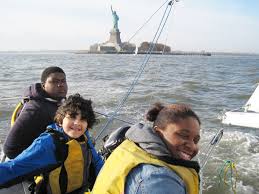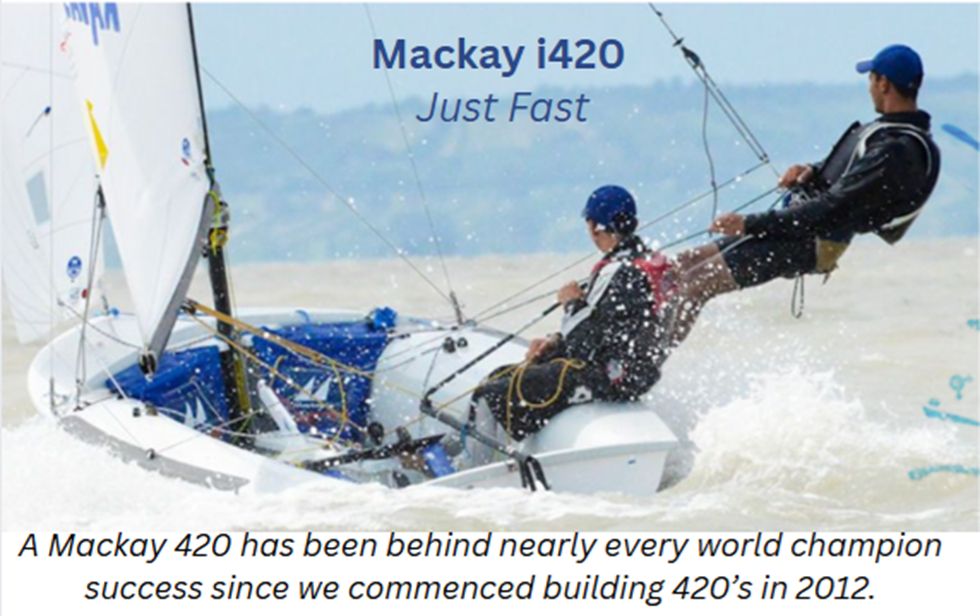Conceived and designed in New Zealand, over 1,300 Weta trimarans have been sold worldwide since it was launched with a splash over 11 years ago.
Hand-crafted – this is no “machine-built boat” – the fibreglass/carbon composite construction delivers the perfect pairing of rigidity and lightweight performance. Expertly made for maximum enjoyment and minimum fuss, whether you’re sailing all out solo, mixing it up with the family or teaching the kids to sail, the Weta is simple to sail, surprisingly quick, and an absolute ton of fun.
It fits into the space of a Laser on the custom trolley but takes only 20 minutes from stow to go with the lightweight carbon components making it easy to assemble.
New for 2017 are a Performance version with foam-core hull and floats making it both 12Kg (26Lbs) lighter and stiffer. And a new larger 9.3 SqM bi-radial square-top mainsail (SQ) compared with 8.3 SqM of the standard sail. The SQ gives more power in light air, excellent downwind but still capable of handling the big breeze that the Weta is famous for.
Sailing World, a major US magazine, awarded the Weta 4.4 Trimaran “Best Dinghy” in their 2010 “Boat of the Year” awards – read the review here In 2016 the Weta was approved for Paralympic sailing because of the combination of stability and performance it provides and it was also used for the World Masters Games in 2017 – with a fleet of 52 Wetas in Auckland, New Zealand. Find a Weta near you using the Weta World Map www.tinyurl.com/wetaworldmap
Fun, fast and easy, life’s better with a Weta!
Blog
Viper 640 International Championship Report & Results
Zeke Horowitz, Ian Coleman, and Brendan Healey Win Aspen Viper 640 International Championship sponsored by EFG
When it was decided that the Viper 640 sports boats would travel to Bermuda during November 2016 for its major regatta, everyone was looking forward to the big winds that prevail on the Great Sound at that time of year. Unfortunately on two of the days too much wind prevailed. The 4-day event, the Aspen Viper 640 International Championship sponsored by EFG, was held from Wednesday – Saturday, November 16-19, in conjunction with the 2016 North American Championship. The regatta came down to only six races over two days of sailing. As was the case on Thursday’s second day of the event when 25+ knot westerly winds with puffs well into the 30’s kept the racers ashore, the final day’s racing also had to be cancelled as the low hovering around Bermuda brought winds well in excess of 25 knots with puffs and frequent rain squalls crossing the Great Sound with wind speeds in excess of 35 knots.
It should be noted that a handful of crews did go for a sail Saturday morning inside the more protected waters of Hamilton Harbor and they were rewarded with spectacular downwind sleigh rides noting that had they been outside in the Great Sound it would been difficult for even the most skilled among the fleet to handle the strong, frequent puffs.
When International Race Officer and PRO Hank Stuart (Rochester, NY) raised Alpha over November, the sailors found the desire to race was countered by the desire to not break boats…or people. As such, Friday’s results for the 41 boats held fast. That allowed Zeke Horowitz (Annapolis, MD), Brendan Healey (Greenwich, CT), and Ian Coleman (Annapolis, MD) to take home both the International and North American Championship trophies. Justin Scott (Darien, CT) sailing with Rob Crane (Darien, CT) and Trevor Burd (Marblehead, MA) claimed second place, also winning the Governors’ Cup (top finishing skipper over 55 years of age). Geoff Fargo, Jeff Grange, and Spencer Steffen, all hailing from Santa Barbara, CA, were third and also the top placing Corinthian crew. Full results at http://yachtscoring.com/event_results_cumulative.cfm?eID=1577.
With sailors coming to Bermuda from across the U.S., Canada, Australia, and the UK, the competition was very tight. A look at the scores revealed that, with the exception of Horowitz’s winning 10 points, had the regatta sailed the final day the scoreboard would surely have been shuffled. Close competition, excellent courses, big breezes, and good sportsmanship prevailed throughout the racing; and ashore, event co-chairs Somers Kempe and Doug De Couto beautifully executed a logistically challenging regatta. Sailors were able to enjoy the hospitality and grandeur of both host clubs, the Royal Bermuda Yacht Club and the Royal Hamilton Amateur Dinghy Club.
When asked about his winning the International and North American Championships, Horowitz was proud of his accomplishment giving the credit to his crewmates Coleman and Healy. “When I joined the Viper Class I knew I’d be more competitive if I had a regular crew,” said Horowitz, “and I was able to talk two of my best friends into joining me on the boat. It helps that Ian and Brendan are both spectacular sailors. It was really great for the three of us to be racing 40 other Vipers on the beautiful island of Bermuda.”
While the Viper 640 Class has held its North American Championship for many years, this is the first time the Class hosted an International Championship. In doing so, it was necessary to have a new perpetual trophy and a sculptor was commissioned to create a piece of art reflecting the Viper’s growing global presence. What he came back with is a unique bronze sculpture that will definitely stand out in any yacht club’s trophy case. Below are pictures of the trophy and Horowitz’s crew holding both the International and North American trophies.
The winning trio: Zeke Horowitz (hat), Ian Coleman, and Brendan Healey (seated)
The regatta concluded Saturday night at the RHADC with a cocktail party and prize giving bringing everyone together one last time. As has been noted in the past, in addition to the great boats these men and women sail, they find the camaraderie among Viper sailors and the international friendships that have developed over years keep them coming back. There were sailors in their early 20s and in their 70s racing competitively, there were parent/child crew combinations as well as husband and wife teams. Of note was the seventh place team comprised of two married couples: Peter and Rachel Beardsley sailing with Jay and Rachel Rhame. Rachel Rhame sailed as hard as anyone on the course despite being five months pregnant. The joke was if they were sailing 4-up or 5?
The sailors were treated to not only the benefit of having an International Race Officer (Stuart) running the races, but they also were served by an International Jury headed by Bermudian IJ Robert Duffy. And, as is the case with most regattas of this magnitude, it would not have been possible to be held without the cooperation and support of the many sponsors including: presenting sponsor Aspen RE, long-term Viper 640 Class sponsor EFG, host sponsor the Bermuda Tourism Authority, shipping sponsors Bermuda Container Line, Bermuda International Shipping Ltd, Somers Isles Shipping Ltd, and Bermuda Forwarders and supporting sponsors Goslings, Gubinelli Wine, Oleander Cycles, Newstead Belmont Hills, and Island Construction.
You can see great regatta photos and video at https://www.facebook.com/2016Viper640InternationalChampionship/?fref=ts with daily recaps at www.viper640.corg.
Contact: Edward Padin, Viper 640 Class Administrator, [email protected]
About Aspen Reinsurance
Aspen Re is a diversified, well-capitalized and strongly rated company that provides carefully tailored underwriting solutions in select markets where we can add a high level of value. Aspen Re’s progress is built on the ability to identify and respond swiftly to emerging opportunities and to operate across a wide range of countries and specialist business lines. Aspen Re is founded on a thorough understanding of client needs, as well as exceptional expertise in assessing and managing risk. The company focuses on building long-term relationships with clients who have track records for sound underwriting, along with exposures that make risk transfer a vital aspect of their business needs.
Aspen Insurance, 141 Front Street, Hamilton HM19, Bermuda
www.aspen.co
About EFG International
EFG International is a global private banking group offering private banking and asset management services, headquartered in Zurich. EFG International’s group of private banking businesses operates in around 30 locations worldwide, with circa 2,000 employees. EFG International’s registered shares (EFGN) are listed on the SIX Swiss Exchange.
EFG International has been the primary supporting sponsor of the Viper 640 Class since 2011. Every year, Viper sailors around the world competing in quailifying events leading up to the EFG Viper Pan-American Championship sailed each March in Miami, FL, as part of Bacardi Miami Sailing Week presented by EFG.
EFG International AG, Bleicherweg 8, 8001 Zurich, Switzerland
www.efginternational.com
About the Viper 640
The Viper 640 is a high-performance one-design sport boat. At 21 ft (6.40 m) and only 750 lb. (340 kg) it combines the stiffness of a keelboat with the acceleration and planing abilities of a dinghy. The Viper has a precise and exhilarating feel on the helm, a spacious cockpit for three or more people, strict one-design class rules, and ease of launching by ramp or hoist. With fleets and regattas around the world, there is certainly Viper racing near you.
For more information contact Viper 640 Class Association Administrator Ed “Buttons” Padin ([email protected]) or Rondar Raceboats’ Dan Tucker ([email protected]
www.viper640.org
Start hiring for summer 2017!
By Airwaves writer Taylor Penwell
The dust from the summer program might be settling but if you are involved in a junior sailing summer program, you know that it requires year round attention.

If you aren’t lucky enough to have a person returning for the position, then it is time to start looking for the next candidate. Lets look at the possible timeline. If you listed the job posting the beginning of this November, it would take the hiring committee members a number of weeks to accept, review, interview and discuss the candidates. This process can done as quickly as a few weeks or can last months, often with the hiring committee left scrambling for a person when the summer program is about to start.
For this article we will say it will take two months to hire a suitable candidate for the job. Now it’s January of 2017. If the new leader is coming from outside the program, they’ll have to be brought up to speed on the program, its history, and how the basic operation has been running and their expectations for the next summer. Even if the person is being promoted from inside the program, they have to familiarize themselves with what is to be expected. No one can fully understand all the expectations until they day they take the position.
The director/head instructor’s next step after familiarizing themselves with the program is to staff their instructors and coaches. They should start by deciding whom from last year’s staff they would like to have for the next summer. This is where communication between the old director/head instructor and new one is important. They can discuss staff member’s strengths and weaknesses. Next, offers should be made to those staff members who will fit next year’s programs visions. It is imperative that these offers start to be sent as soon as can be. These offers should start being made in January.
Most junior sailing programs staff consists of young members in high school, college, or recent college graduates. In my experience as a head instructor I have found two common problems when staffing the junior sailing program. The first problem is that candidates change their minds. People will often agree to the job only to back out when the summer is right around the corner. The second problem is that people have plans for their summers a long time in advance. This could include studying abroad, traveling or maybe working at a different yacht club and if that happens you are already too late!

It is never too early to have staffed your summer program. That is if you have the returning staff and new staff members you are satisfied with. Just like the saying goes, the earlier, the better. It will give you room to work with if the staff hiring process takes longer than expected, or like mentioned earlier, you have someone bail.
Remember to use Sail1Design for posting all job vacancies for your program! Sail1Design is the best place to list for all jobs concerning junior sailing. Sail1Design is also a great place to list your resume for programs and yacht clubs to search for needed candidates. http://sailingjobs.sail1design.com/
We also have a very deep and large RESUME DATABASE available!
Thanks for reading and happy hunting!
Coaches Locker Room: The Importance of Teaching Sportsmanship To Our Young Sailors
By Airwaves writer Racheel Bennung
Coaching sailing is a great job, whether you do it full time, part time, or seasonal, nothing is greater than being on the water teaching our youth the joy of sailing. However, sailing can also be one of toughest sports to teach. One of the biggest reasons for this is because we are a self-policing sport. You won’t see any referees or umpires out on the course most of the time, so we as sailors must be honest and sportsmanlike on the water. This can be a hard concept to teach young sailors, since most other sports have someone else making the calls for their mistakes. Now they must be honest even when maybe no one saw their foul. This is why teaching the rules and sportsmanship to our young sailors is so important, and will lead to better and honest sailors.
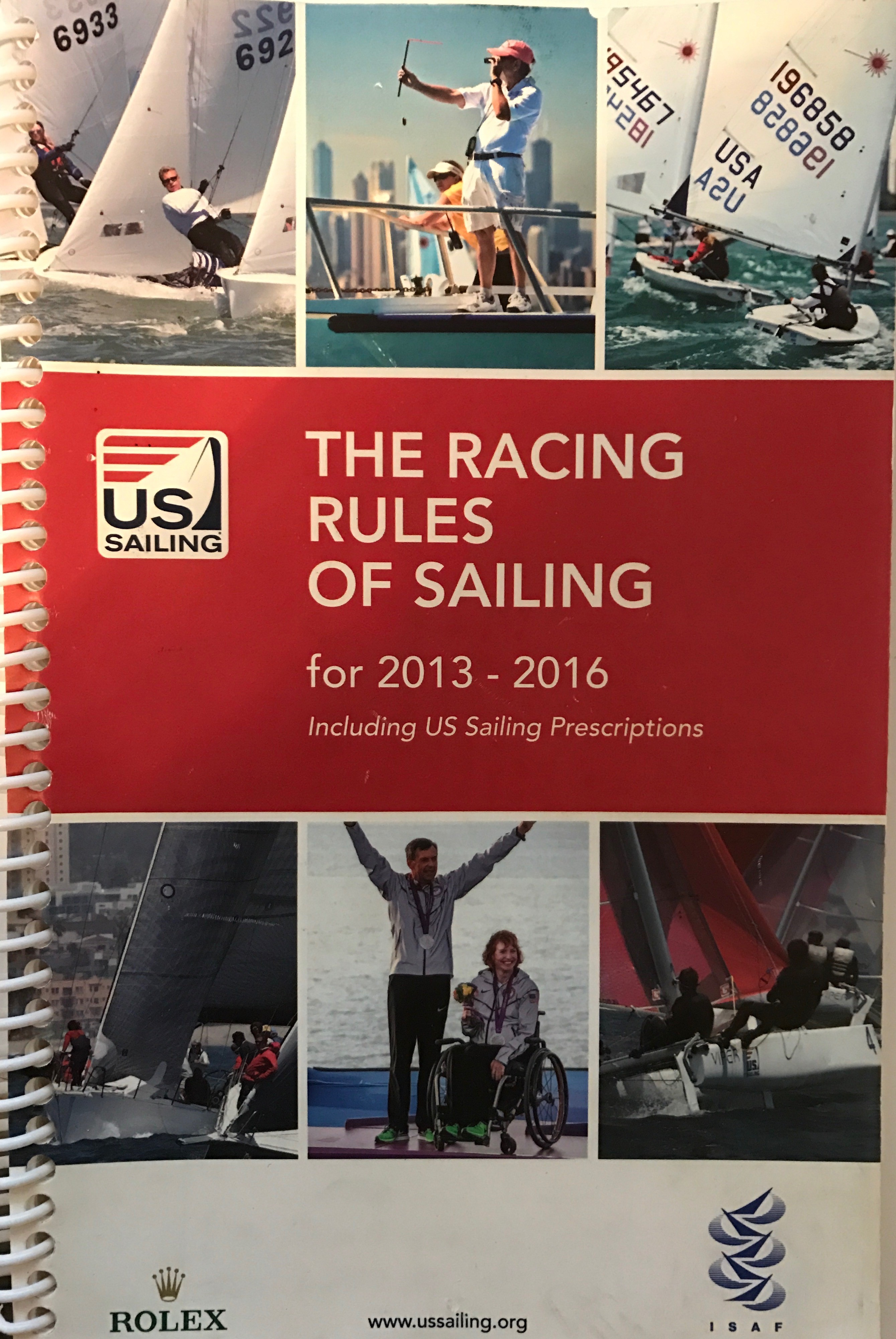
Let us begin with teaching the rules to your sailors. The rules are complicated, and a challenge to teach to your sailors. Even sailors who have been sailing all their lives have to look at the rule book to check themselves now and again. So how do you teach this complicated subject to your young sailors. Below are three tips for how best to teach your sailors the rules of sailing.
Tip #1: Make it age and ability appropriate
First thing is you want to make sure you are teaching your group appropriately. Teaching the rules to beginners that are 8 years old and beginners that are 14 years old are going to done very differently. So first, you want to identify your group and build your lesson plan off their age and ability. For beginners that are young, you should start with visuals lessons on what the rules are. You want to make sure you are going over the basics and not getting to in-depth. Intermediate groups that are a little older you can dive a little deeper, and start getting into what the rules state in the rule book. Make sure you stick to the bigger rules that they would see out on the race course. For our advanced sailors that are older you can get more into the rule book. You can have longer chalk talks, and really get into the nitty gritty of the rules.
Tip #2: Use the indoors, outdoors, and on the water to teach
Teaching the rules to young sailors needs to be interactive. We need to incorporate them into the teaching so they 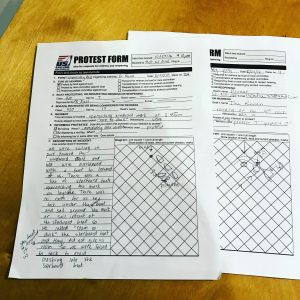
Tip #3: Make it fun
Making the rules fun is very important! If you just give your group a chalk talk on the rules every once in a while they will have a pretty boring time. So you want to make it interactive and fun for your group. Getting them involved and having fun with learning the rules will enable them to retain the information better then you just lecturing them. Lectures are important, and should be done, however, we need to make it fun for our sailors so they want to learn more!
Now how to do you teach good sportsmanship to your young sailors? As a young sailor it can be hard for them to grasp the concept of: “I hit a mark and no one saw it do I really have to spin?” We need to explain in great detail the importance of sportsmanship out on the water to our sailors. This is the foundation of the rule book, and we need to share its importance to our sailors every time they get on the water. Some great ways and things to teach sportsmanship to your sailors are:
- Team building activities.
- Talk as a whole on what makes a good sport.
- Teach your sailors its not all about winning.
- Teach your sailors that sportsmanship also means not only following the rules, but enforcing them.
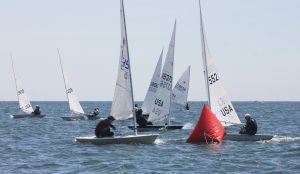
Notice of Meeting: College Sailing 101: Inside the World of College Sailing for Prospective College Sailors
Don’t delay in registering; last year’s event was SOLD OUT! Parents are encouraged to attend. Click to register. ALL student athletes MUST register. Parents are welcomed to attend and do NOT need to register.
Current List (this will grow) of attending colleges:
| Tufts University |
| Brown University |
| Georgetown |
| St. Mary’s College |
| Bowdoin College |
| Mitchell College |
| George Washington U. |
| Old Dominion U. |
| Hobart/William Smith |
| Connecticut College |
| Gannon |
| USMMA – Kings Point |
| Fordham |
| U. Pennsylvania |
| Washington College |
| US Naval Academy |
| Roger Williams |
| SUNY Maritime |
| Syracuse |
| U. Rhode Island |
| Christopher Newport Middlebury |
| Stony Brook |
| UMBC |
| Drexel |
https://www.sail1design.com/event/college-sailing-101-inside-world-college-sailing-prospective-college-sailors/?instance_id=8723
Club Profile: Hudson River Community Sailing
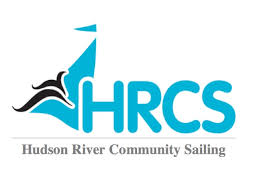
Founded in 2007 to serve the urban community, we partner with public schools to offer credit-bearing academic programs, internships, mentoring, and college readiness. Our youth development platform uses sailing, boat operation, and boat building to further academic skills and instill the qualities of character necessary for college and career success. We also serve the broader community through affordable marine education and recreation for individuals, groups, schools, businesses, and families.
NewsFlash: HRCS is Hiring Sailing Instructors!
HRCS Mission
Hudson River Community Sailing develops leadership and academic success in underserved New York City youth through sailing education and provides maritime education and recreation to the community at large.

Our facility is an award winning pier and boathouse, located on the western side of the West Side Highway at 26th Street. We are an affiliate of New York River Sports, making up the most unique water sport access point in our city.
From Battery Park to mid-town, Hudson River Park is enriching the relationship of New York City residents and guests with their waterfront. A full description of current and future plans are available at their website.
NewsFlash: HRCS is Hiring Sailing Instructors!
